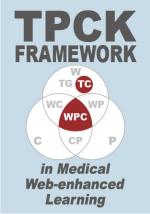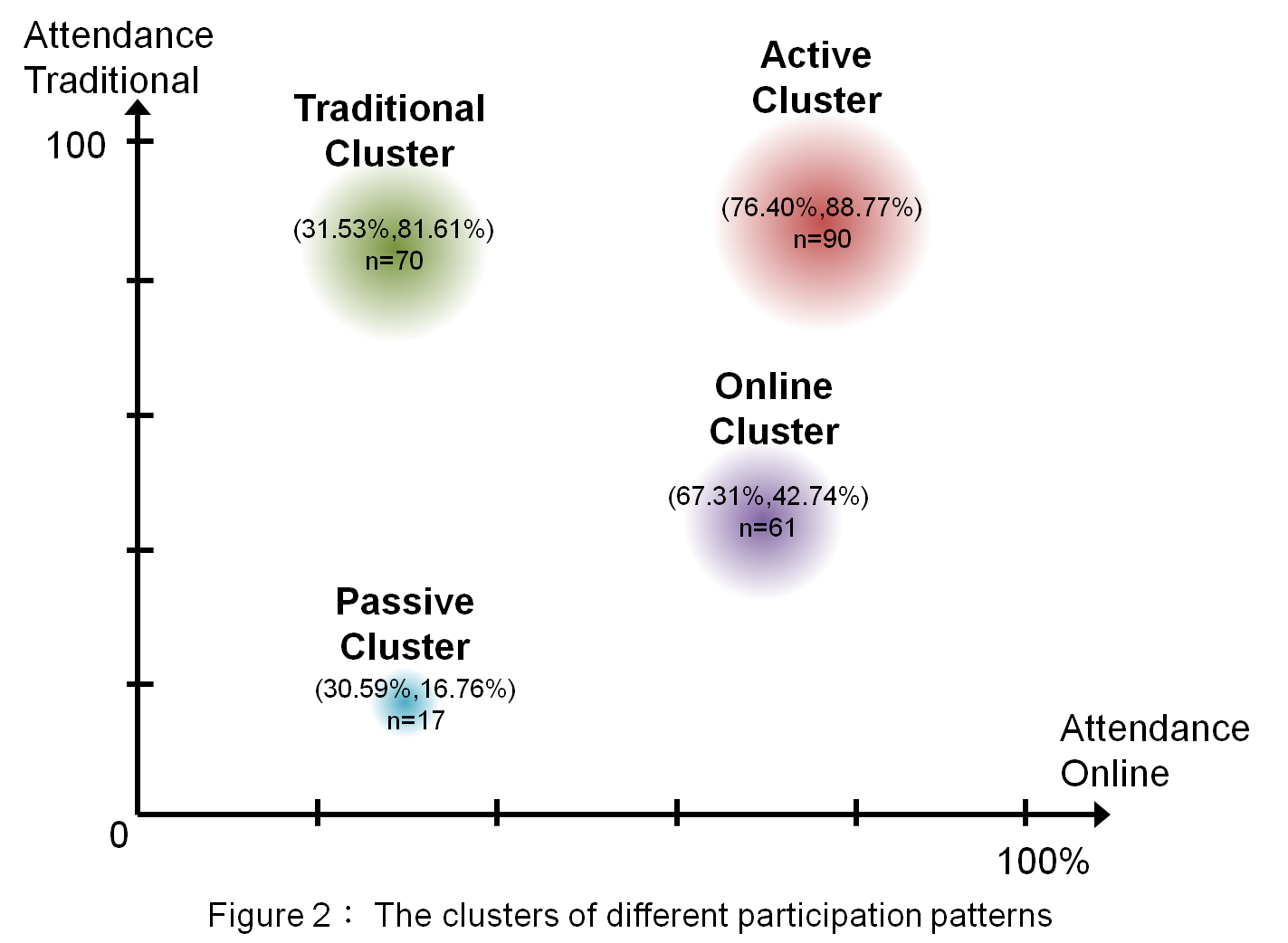


Theme
eLearning
INSTITUTION
China Medical University Hospital
China Medical University
- Self-regulated learning (SRL)?An argument that SRL is the interplay between learner and learning contexts rather than the traits of the learner only. (Greveson, 2005)
-
This study try to explore the interplay with
- Contexts?traditional classroom vs. online
- Learners?participation patterns (clusters) among students; participation mediates the relationships between motivation, learning strategies and medical school performance.(Stegers-Jager, 2012)
-
SRL framework in this study
- an active process of learning including being driven by motivational beliefs and adjusting the learning strategies of self-regulation. (Zimmerman, 1990) (Figure 1)

- Participants?300 , junior clerkship students, experienced the two contexts
- Contexts?traditional and online contexts for knowledge acquisition complemented to clinical rotation
-
Measurements
- 1. Students’ attendance in the two contexts
- 2. Quantitative: SRL questionnaire (SRLQ) modified from OSLQ(Bernard, 2009) and MSLQ(Pintrich, 1990)
- 3. Qualitative: Students’ feedbacks about how and why they perceived better SRL in which contexts
-
Analysis?
- 1. Cluster analysis: with k-mean clustering (Aldenderfer, 1984) (Lin, 2011)
-
2. Quantitative
- Exploratory factor analysis (EFA) of SRLQ for both contexts
- Comparisons between contexts and clusters
- 3. Qualitative?Content analysis
1. Clusters (Figure 2) (Table1 in detail)

2-1. EFA?revealed adequate validity and reliability with identical 4 factors in both contexts (Table2 in detail)
2-2. Compare SRL perceptions of traditional and online contexts among clusters (Figure 3) (Table3 in detail)

3. Content analysis?13 categories from 47 pattern codes, all 4 clusters can identify all the same 13 categories
- All clusters recognized the facility to support SRL and the need of SRL for online context : more for online cluster
-
All clusters recognized the function of “regulated by others” for online context, especially acknowledged by the traditional cluster
- However, few students around (4%) in each cluster thought: the SRL is independent from contexts
- The interplay do exist! SRL is not pure learner trait and neither totally context dependent
-
The interplay is majorly constituted by “GT, Goal setting and Time management” and some by “SE, Self-Efficacy”
-
SE?the digital natives, the online cluster students are not so confident with traditional learning context
-
GT?most clusters of students perceived better SRL in online context, however the best in the traditional context become the worst in the the online context
online learning context may promote SRL with the consideration to recognize and help the traditional cluster of students.
The authors expressed their gratitude to Prof. Chih-Chung Tsai and Prof. Hsin-Kai Wu for their guidance about this research works.
Aldenderfer, M. S., & Blashfield, R. K. (1984). Cluster analysis. Newbury Park: Sage Publications.
Barnard, L., Lan, W. Y., To, Y. M., Paton, V. O., & Lai, S. L. (2009). Measuring self-regulation in online and blended learning environments. Internet and Higher Education, 12(1), 1-6.
Greveson, G. C., & Spencer, J. A. (2005). Self-directed learning - the importance of concepts and contexts. Medical Education, 39(4), 348-349.
Lin, C. C., & Tsai, C. C. (2011). Applying social bookmarking to collective information searching (CIS): An analysis of behavioral pattern and peer interaction for co-exploring quality online resources. Computers in Human Behavior, 27(3), 1249-1257.
Pintrich, P. R., & Degroot, E. V. (1990). Motivational and self-regulated learning components of classroments of academic-performance. Journal of Educational Psychology, 82(1), 33-40.
Stegers-Jager, K. M., Cohen-Schotanus, J., & Themmen, A. P. N. (2012). Motivation, learning strategies, participation and medical school performance. Medical Education, 46(7), 678-688.
Zimmerman, B. J. (1990). Self-regulated learning and academic-achievement - an overview. Educational Psychologist, 25(1), 3-17.
 Send Email
Send Email